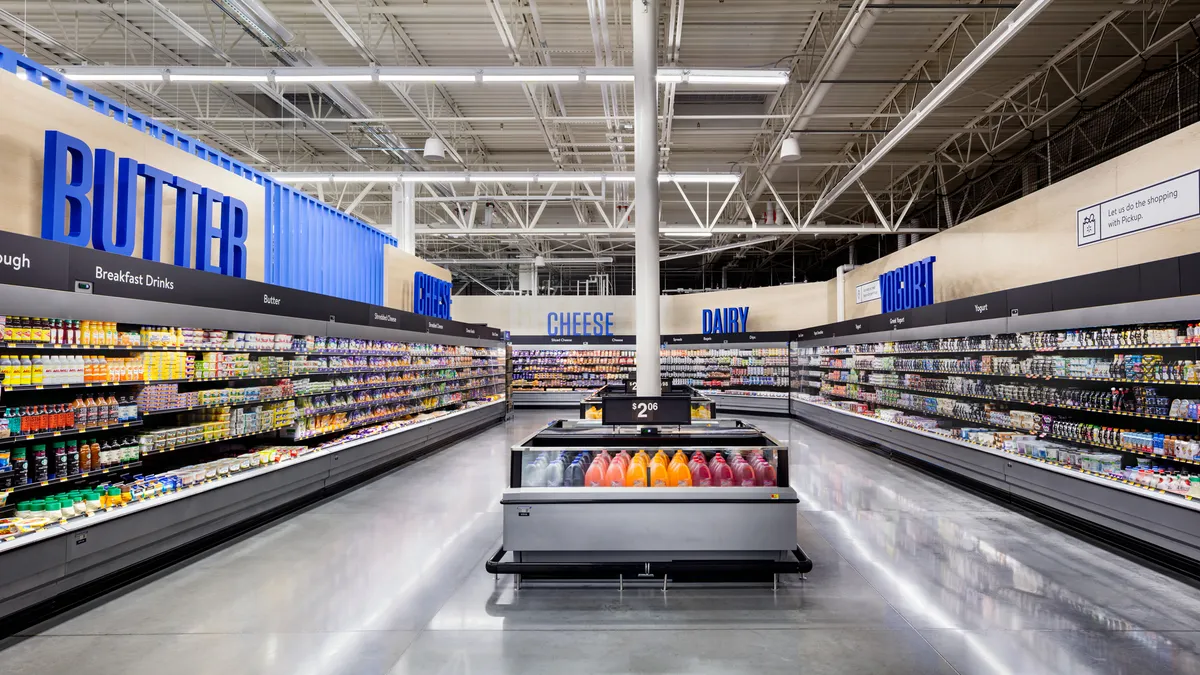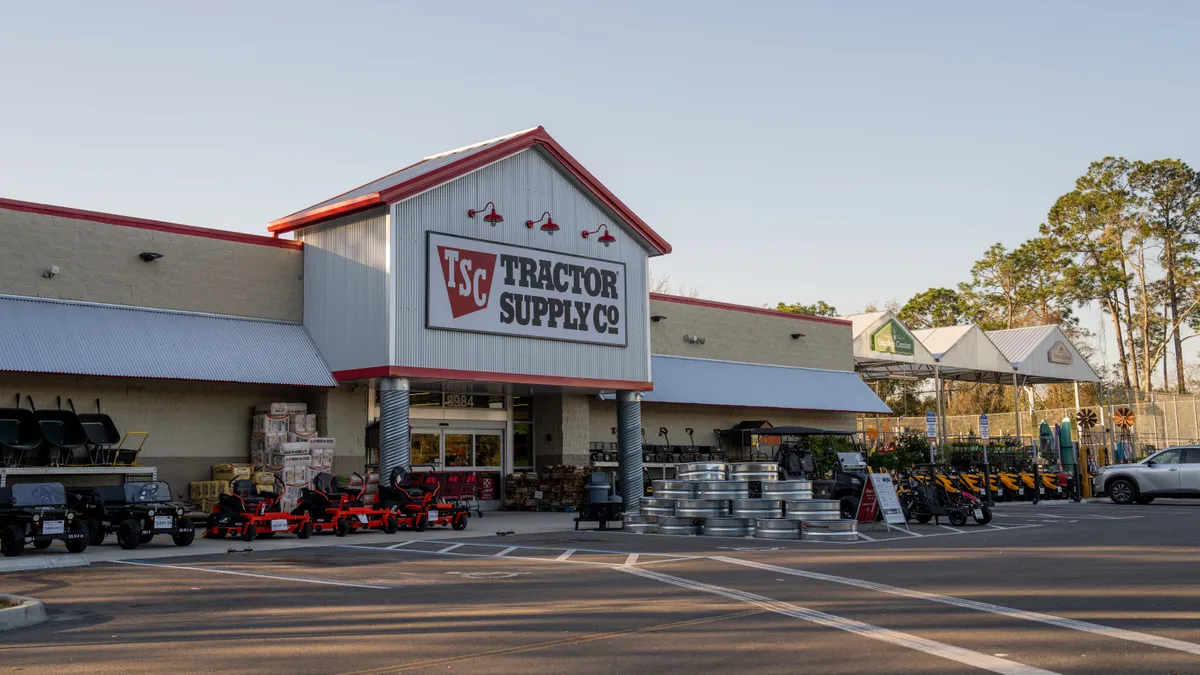Dive Brief:
- Walmart posted a better-than-expected performance for the second quarter, with companywide revenue and earnings beating analyst estimates. In the U.S., comp sales rose by 6.5% and net sales by 7.1%, to $105.1 billion.
- Operating income in Walmart’s U.S. business fell 6.7%. Executives attributed lower operating profits and margins on markdowns and a higher share of grocery products in the retailer’s sales mix.
- With traffic and sales improving, management held its guidance for the second half, projecting comp growth of 4% in the U.S. for the full fiscal year.
Dive Insight:
Given its scale, and how many categories and demographics the retailer crosses, Walmart has a window into the consumer and economy that few other retailers do. As with the retail market as a whole, the story of inflation at Walmart has been multilayered.
For one, as CEO Doug McMillon acknowledged on a call Tuesday with analysts, inflation has increased the retailer’s sales. In Walmart’s U.S. business, average ticket size was up 5.5%, driving the lion’s share of the retailer’s comp sales growth — though, notably, transactions did also grow by 1%.
Inflation has also driven more middle and higher income shoppers to Walmart and its low-price proposition, McMillon said. At the same time, higher prices across the economy have, as is well known now, shifted what consumers are buying. That has created both opportunities and pain for Walmart.
Being a major food and consumables retailer, Walmart has been capturing market share in those categories, McMillon said on the call. Comp sales in food went through growth rates in the mid-teens in Q2.
Walmart, while raising food prices, has an opportunity to win over customers by keeping certain prices lower than competitors in the category, including on its private label items. But food inflation generally, across the economy, has caused consumers to pull back spending on other areas, which has hit Walmart’s bottom line in multiple ways.
For one, the rise in food and consumable sales at Walmart has shifted its overall sales mix to those lower margin goods. Pullbacks in consumers in areas like apparel and some hardlines has led to markdowns so Walmart could clear out excess inventory — further dinging profits.
Chief Financial Officer John David Rainey noted that general merchandise inventory growth rates is down more than 15 percentage from Q1, and general merchandise’s contribution to sales mix was down 350 basis points, a reflection of those consumers playing defense against food inflation.
Neil Saunders, managing director with GlobalData, noted in emailed comments that “Walmart has way too much” general merchandise inventory, which has “resulted both in a less pleasant shopping experience in store, which harms purchasing rates, and the necessity of discounting to clear down the excess.”
Saunders also argued that Walmart historically is “not particularly good at attracting new customers to its general merchandise offer, even during times of economic stress for consumers.”
Walmart has been trying for some time now to improve the share of general merchandise in its sales mix. Inflation in food — which, with food prices driven in part by transportation costs, executives said could begin to ease with gas prices — is only exacerbating the problem.
Even within the general merchandise umbrella, the picture is not a simple story. While Walmart might be holding inventory and prices down to meet sluggish demand on some products, management is encouraging its buyers to be aggressive where they see opportunities. As one example, McMillon pointed to inflatable Halloween decorations.
“When you see them, you’re like, ‘We’re going to blow out of some of those,’” McMillon said. “And we want buyers in some categories to have that mentality and be aggressive. And other places, we want to be more conservative so we don’t repeat mistakes that we’ve had in the first half of this year.”
On the whole, Q2 came in ahead of Walmart’s revised and tempered guidance for the period. Rainey said that customer traffic improved in July, which could be driven by lower gas prices and the back-to-school season. It’s one sign of hope that the market disruptions of the past quarter could be working themselves out.















